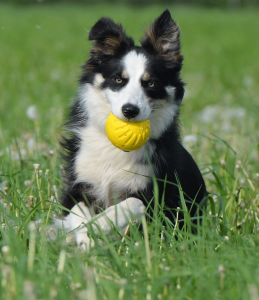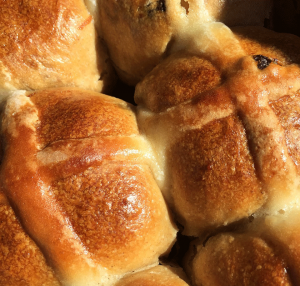The range of dog toys available to us has positively exploded in recent years as we increasingly seem to enjoy treating our beloveds to new and interesting playthings. From budget tennis balls to high-end, luxury toys that wouldn’t be out of place in a child’s bedroom, the choice can be overwhelming. So which toy is best for your dog? We have compiled a few tips to help you make the right choice.
It’s horses for courses
It is worth considering your dog’s breed when choosing a suitable toy, as well as their personality in general.
For some, the clue is in the name. For example, ‘Labrador retrievers’ and ‘golden retrievers’ are likely to want to chase and retrieve an item. So a ball (with a flinger to save your shoulder) is likely to go down a storm with these guys. Even better, these gun-dog breeds with ‘soft mouths’ will take pride in returning a soft toy to you, you can even buy them in the shape of common game birds.
Perhaps your dog is a sucker for a game of tug. In which case, a strong rope-based toy is likely to be the most satisfying. A word of caution, take care of your dog’s teeth and mouth, don’t play too roughly with them. Likewise, watch your hands! Keep your fingers at a safe distance from overzealous nashers, by using a rope toy that is long enough for the both of you.
What about those who are incessant about sticks? These individuals are a real worry since we know what potential perils can result from running with sticks. Fear not, there’s an alternative for stick-lovers too. Kong make a toy that is sticklike in shape but made of rubber and features safe, soft, rounded ends.
 Then there are the young and inquisitive puppies who will find toys of different textures fascinating. A crunch sound here and soft mouthful there, some toys incorporate a range of sensations within the very same toy. Teething puppies can find relief from sore gums by mouthing on the right kind of material. It is important, however, that a toy such as this is designed for purpose. There is a danger of damaging delicate baby teeth with overly hard materials, or of ingestion of small chewed parts.
Then there are the young and inquisitive puppies who will find toys of different textures fascinating. A crunch sound here and soft mouthful there, some toys incorporate a range of sensations within the very same toy. Teething puppies can find relief from sore gums by mouthing on the right kind of material. It is important, however, that a toy such as this is designed for purpose. There is a danger of damaging delicate baby teeth with overly hard materials, or of ingestion of small chewed parts.
Brain training
There is a vast array of toys on the market designed to mentally stimulate your dog, providing hours of fun. Many involve the promise of a treat once they work out how to access it for example the Kong Wobbler whereby the dog must knock the treats out. Others reward your dog by flinging a ball for them to fetch if they press the right button. Many owners find these useful for overactive individuals for whom hours of exercise doesn’t even cut it (Collies spring to mind). These toys should never be a replacement for exercise, but something to complement your dog’s routine and exercise regime.
Plaything pitfalls
As vets, it’s not uncommon to see dogs who have, quite literally, bitten off more than they can chew. Some dogs see a toy as a challenge, something to be destroyed as quickly as possible and seem to have teeth like razors. The trouble comes when pieces are accidentally (or otherwise) ingested. The classic culprit in these scenarios is the plastic squeaker from a soft toy. Squeakers and other large inedible toy parts are likely to require surgical removal, or at the very least cause stomach upset. There will be owners out there who are accustomed to seeing the stuffing stripped from soft toys and strewn around the sitting room. If you are one of these, it is important to account for all toy-parts and phone for advice if you can’t piece the puzzle back together again.
So are there toys out there that can stand the test of time? Well that depends on the pooch. There are tough ranges of toys that claim to, however the most tenacious of dogs can often defeat these too. It is sensible to be savvy in these cases and choose toys that serve a different purpose.
One example is the Kong Extreme, which is not only designed from super-strong materials but also refocuses the mindset from one of destruction, to one treat-seeking as it allows you to stuff the cone-shaped toy with their favourite flavours. You are likely to find that your dog is occupied for much longer too!
Another consideration is the importance of buying size-appropriate toys for your dog. This can be tricky if your pack includes the likes of a Labrador as well as a Chihuahua for example. Mini tennis balls are available on the market for those with mini-mouths. It just so happens however, that these slip easily down the windpipe or can be easily swallowed by larger breeds of dog, we need not explain the problems associated with that, we’re sure. Large, hard, chew toys for large breeds are also likely to damage the mouths of a small breed dog, often size-guidance is provided by the manufacturer.
With the exciting and plentiful array of toys now available to us, there is something available to suit all doggy tastes out there. Of course what is super-important to any playful pooch too, is the time spent with their beloved human. So enjoy!




